Guide to Picking the Right AC Pipe Kit for Your System
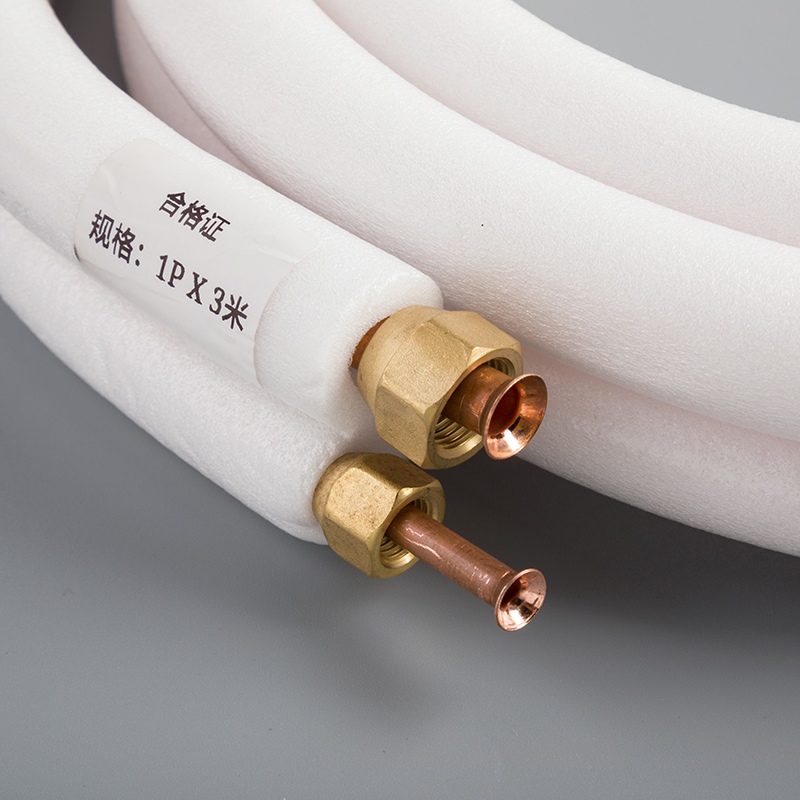
When it comes to keeping your AC running efficiently, pipes play a crucial role. A ready-to-install AC pipe kit with insulation Pakistan is an excellent choice for saving energy and reducing bills. It prevents moisture problems, protects your AC system, and ensures it lasts longer while avoiding expensive repairs. Opting for a ready-to-install AC pipe kit with insulation Pakistan is a smart and hassle-free solution.
Key Takeaways
Insulated AC pipes help save energy and cut costs. Pick insulation with a high R-value for better results.
Insulated pipes stop moisture issues. This prevents condensation, mold, and rust, keeping your home safe.
Choose the right material for your weather. Rubber and foam are great outside, while fiberglass works indoors.
Measure your pipes carefully before buying insulation. A good fit stops leaks and keeps things efficient.
Think about humidity and temperature around you. These affect how well your AC works and lasts.
Why Insulation Matters for AC Pipes
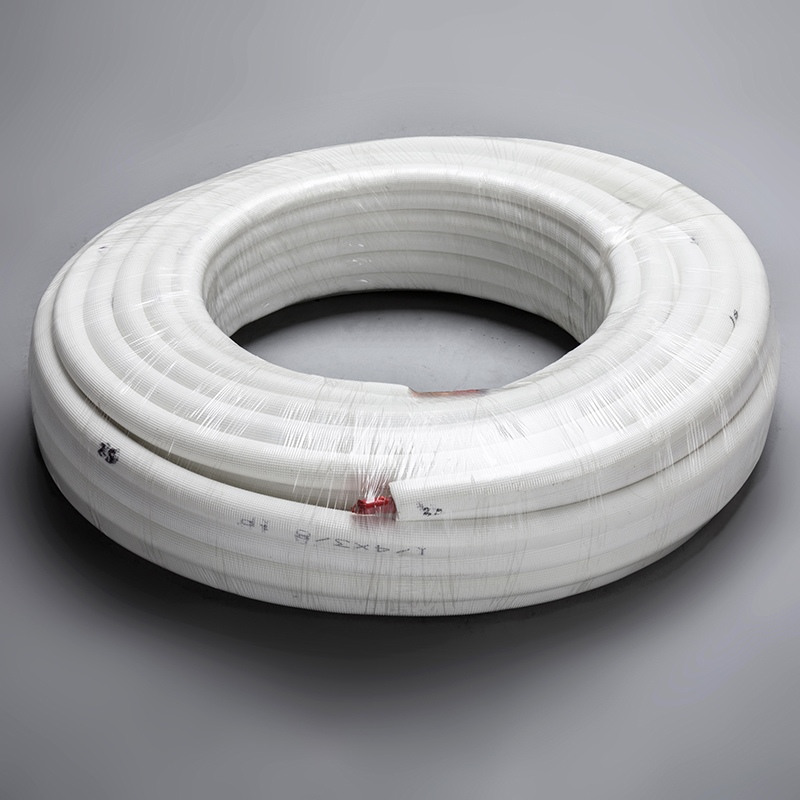
Energy Efficiency and Lower Bills
Did you know insulated AC pipes can save you money? Proper insulation stops cool air from escaping as it moves. This helps your AC work less to keep your home cool. When your AC works less, it uses less energy. Using less energy means your bills will be lower.
Tip: Choose insulation with a high R-value. The R-value shows how well it blocks heat. A higher R-value gives better insulation and more savings.
Picking the right insulated pipe kit saves money and helps the planet. It’s good for your wallet and the environment!
Stopping Condensation and Moisture Problems
Have you seen water drops on your AC pipes? That’s condensation, and it can cause big issues. Without insulation, warm air touches cold pipes, making moisture form. Over time, this can lead to mold, rust, and water damage.
Insulated pipes stop warm air from reaching the cold pipe surface. This prevents moisture from forming in the first place. No moisture means no mold or damage, keeping your home safe and your AC working well.
Note: If you live where it’s humid, insulation is extra important. High humidity makes condensation worse, so don’t skip this step!
Making Your AC System Last Longer
Your AC system is an investment, so you want it to last, right? Insulated pipes help protect your system from wearing out too fast. When your AC doesn’t work as hard, it stays in better shape. This lowers the chance of breakdowns and helps it last longer.
Insulation also protects pipes from outside damage. It guards against temperature changes, bumps, and sunlight. Keeping pipes safe helps your AC stay reliable for years.
Reminder: Combine regular maintenance with insulation to make your AC last longer. This simple step can save you money and trouble!
Key Factors to Consider When Choosing an Insulated AC Pipe Kit
Material Types and Their Durability
The material of your AC pipe insulation is very important. It affects how long it lasts and how well it works. Some materials are strong and last longer, while others are cheaper but wear out faster. Pick one that fits your needs and budget.
Here’s a simple table showing how durable common materials are:
Property | Value |
|---|---|
Thermal conductivity | 0.027-0.030 W/m.K |
Operating Temperature | -40 to +100 ºC |
Fireproof Performance | B2 (Class B2) |
Compression Strength | 150 KPa |
Elastic Restoring Rate | 90% |
Resistance To Tensile Stress | 180 KPa |
Flame Resistance Index | 18-25.5 |
Hardness | 20-30 Kg/m3 |
Think about where your pipes are located. If they’re outside in the sun or in extreme weather, choose a material with high heat resistance. Rubber and closed-cell foam work well outdoors. Fiberglass is good indoors but not great for outdoor use.
Tip: Always read the manufacturer’s guide to ensure the material fits your system.
Insulation Thickness and Its Impact on Performance
The thickness of insulation affects how well it blocks heat. Thicker insulation keeps heat out better, but you don’t always need the thickest option. The right thickness depends on your climate, pipe size, and energy goals.
Here’s how thickness changes performance:
Insulation Thickness (m) | Roadway Wall Temperature (°C) | Reduction (%) | Radius of Heat-Regulating Circle (m) | Reduction (%) |
|---|---|---|---|---|
0 | 45.06 | N/A | 22.1 | N/A |
0.1 | 44.99 | 0.16 | 21.5 | 2.71 |
0.2 | 44.94 | 0.27 | 21.5 | 2.71 |
0.3 | 44.89 | 0.38 | 20.6 | 6.79 |
0.4 | 44.83 | 0.51 | 20.6 | 6.79 |
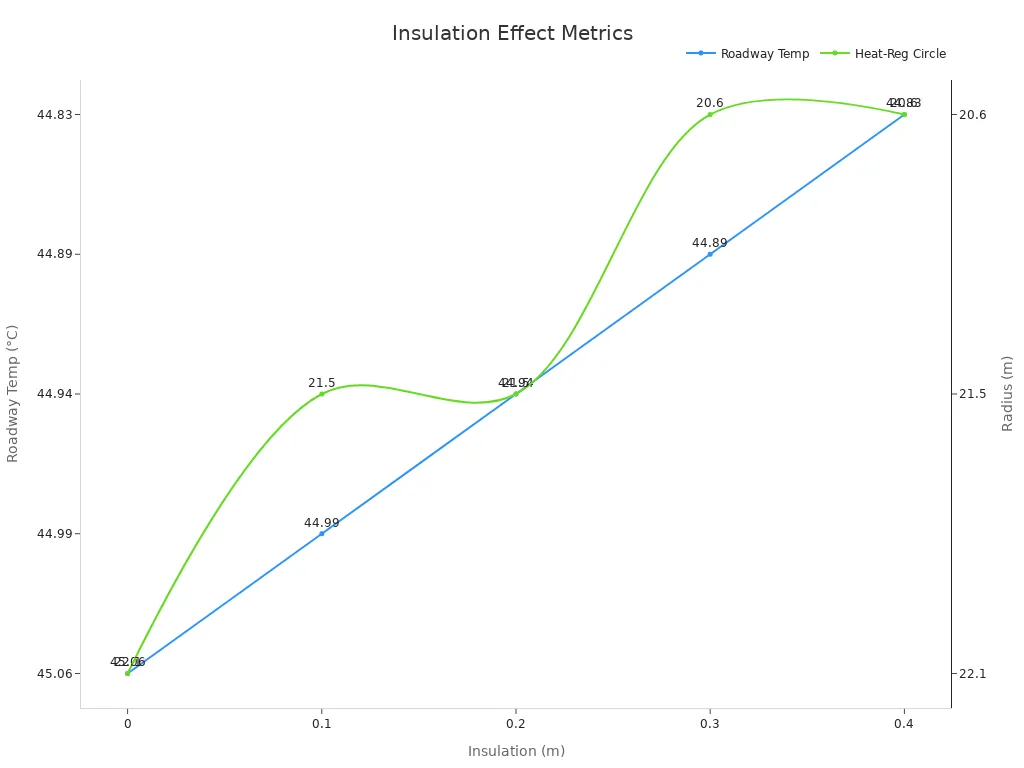
Even a small increase in thickness can reduce heat loss. But adding too much thickness won’t always help much. Find the right balance for your needs.
Note: If you live in a hot or humid area, thicker insulation can help handle the tough conditions.
Compatibility with Your Air Conditioning System
Not all insulated pipe kits will work with every AC system. Before buying, make sure the kit matches your system’s size and type. This will help avoid problems later.
Here’s what to check:
Size and Shape: The insulation should fit your pipes perfectly. A bad fit can cause leaks or damage.
R-value: Match the R-value to your climate. Higher R-values are better for extreme weather.
Airtightness: Look for kits with good sealing materials to stop air leaks.
Cost: Don’t just pick the cheapest option. Think about long-term savings and durability.
Pro Tip: Measure your pipes carefully before buying. Even small mistakes can cause trouble during installation.
By keeping these points in mind, your AC system will work better and last longer. Spending a little extra time now can save you money and stress later!
Environmental Conditions and Climate Considerations
Your local environment affects your AC system’s performance. The climate you live in can change how well your system works and how long it lasts. Here are the main environmental factors to think about.
1. Temperature Extremes
Hot summers or freezing winters can stress your AC pipes. Without insulation, heat enters cooling lines in summer or escapes in winter. This makes your AC work harder, using more energy and wearing out faster.
Tip: In hot areas, pick insulation with a high R-value. It blocks heat and keeps your system efficient. In cold places, thicker insulation stops freezing and pipe damage.
2. Humidity Levels
High humidity can cause condensation on AC pipes. Over time, this leads to mold, rust, and water damage. Insulation keeps moisture away from pipes and prevents these problems.
For humid areas, use rubber or closed-cell foam insulation. These materials resist moisture and stop condensation.
For dry areas, less moisture protection is needed, but insulation still saves energy.
Note: Coastal areas have salty air that speeds up corrosion. Choose insulation with protective coatings for extra durability.
3. Sunlight Exposure
Direct sunlight can weaken some insulation materials. Outdoor pipes are especially at risk from UV rays.
Rubber insulation works well outdoors because it resists UV damage.
Foam insulation may need a UV-resistant coating to last longer.
Pro Tip: Check if your kit includes UV protection. If not, buy a UV-resistant wrap to protect it.
4. Wind and Rain
Outdoor pipes face wind and rain, which can harm insulation. Strong winds loosen insulation, and rain can seep into gaps, causing damage.
Pick kits with airtight seals to block water.
Secure insulation tightly to handle windy conditions.
5. Seasonal Changes
Big temperature swings can make pipes expand and contract. This weakens insulation over time. Flexible materials like rubber or closed-cell foam handle these changes better than rigid ones like fiberglass.
Reminder: Inspect insulation for cracks or gaps after extreme weather. Fixing issues early prevents expensive repairs.
Quick Comparison Table: Best Insulation by Climate
Climate Type | Recommended Insulation Material | Key Features to Look For |
|---|---|---|
Hot and Dry | Closed-cell foam | High R-value, UV resistance |
Hot and Humid | Rubber | Moisture resistance, durability |
Cold | Fiberglass or thick foam | Freeze protection, thickness |
Coastal | Rubber with protective coating | Corrosion resistance, flexibility |
By thinking about these factors, you’ll pick the best AC pipe kit for your climate. This helps your system stay efficient, last longer, and save money over time.
Comparing Common Insulation Materials
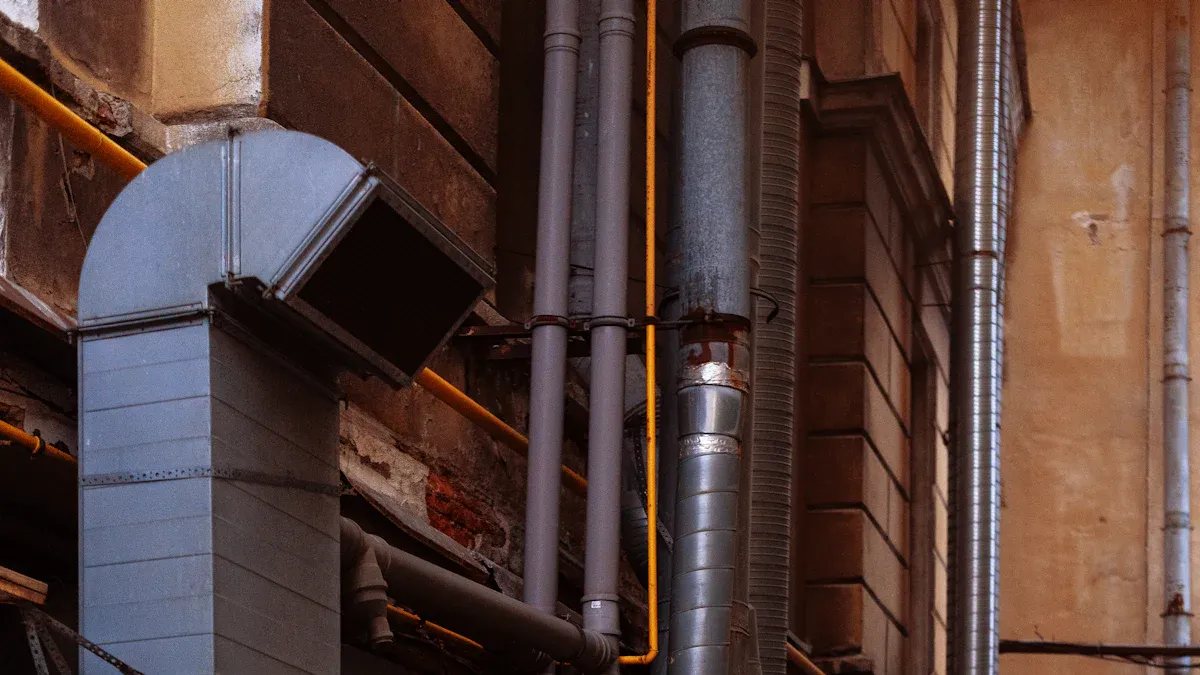
Foam Insulation: Pros and Cons
Foam insulation is light and simple to put on pipes. It keeps your AC system working well by stopping heat loss. Indoors, it works great since it avoids sunlight and bad weather.
But foam has some issues. Outside, it doesn’t last long unless it’s UV-protected. Sunlight can damage it over time. Foam can also get squished, making it less effective.
Tip: Use foam insulation with UV protection for outdoor pipes. This helps it last longer.
Rubber Insulation: Pros and Cons
Rubber insulation is strong and bends easily. It handles temperature changes, so it’s good for places with different seasons. Rubber also blocks moisture, making it ideal for humid areas. It’s tough enough for outdoor use, even in wind and rain.
However, rubber costs more than foam and is heavier. This might make it harder to install. But if you need something durable for tough conditions, rubber is a smart pick.
Pro Tip: Rubber insulation works well in coastal areas. It resists salty air and prevents corrosion.
Fiberglass Insulation: Pros and Cons
Fiberglass insulation keeps heat in or out, saving energy. It’s a good choice for indoor pipes where there’s no moisture. It’s also cheaper, making it budget-friendly.
Still, fiberglass has problems. It can soak up water, leading to mold and less efficiency. Over time, this moisture can cause rust, which may need costly repairs.
Benefit/Drawback | Description |
|---|---|
Low thermal conductivity | Fiberglass insulation saves energy by keeping heat from escaping. |
Moisture-wicking susceptibility | It can absorb water, causing mold and lowering its performance. |
Corrosion under insulation (CUI) | Water can lead to rust, increasing repair costs. |
Note: Fiberglass is best indoors where it stays dry. If used outside, add a moisture barrier.
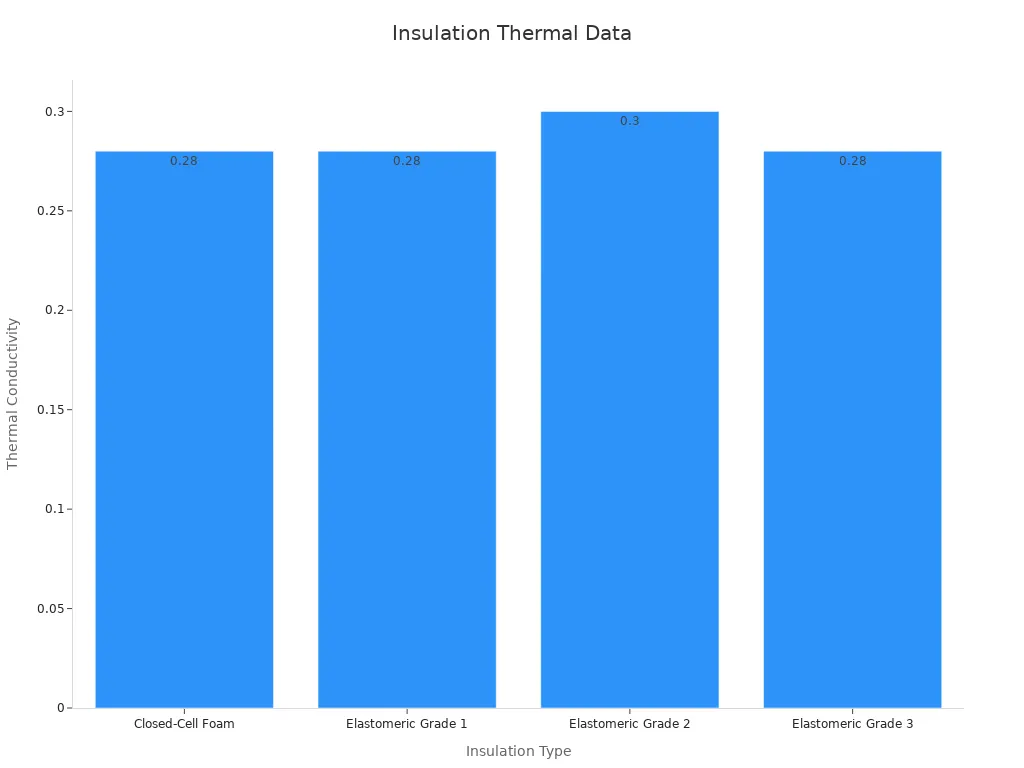
Each type of insulation has good and bad points. Knowing these helps you choose the right one for your needs.
Closed-Cell Foam Insulation: Pros and Cons
Closed-cell foam insulation works really well for AC pipes. It’s one of the best choices for keeping your system efficient. This material blocks heat effectively, even in tough weather. It also resists moisture, making it ideal for humid places.
A great thing about closed-cell foam is its strength. It doesn’t just insulate; it also makes pipes sturdier. This durability helps it last longer and handle damage. It also keeps pests away, so critters won’t ruin your insulation. Plus, it fits oddly shaped pipes perfectly, sealing every gap.
But closed-cell foam has downsides too. It’s the priciest option, which might be hard on your budget. Installing it can be tricky and messy if not done right. Poor sealing can lead to mold problems. Safety is another issue since installation needs careful handling to avoid health risks.
Here’s a simple list of the pros and cons:
Pros | Cons |
|---|---|
Blocks heat very well (R6-R8 per inch) | Costs more than other insulation types |
Resists moisture and humidity | Health risks during installation |
Adds strength and keeps pests away | Can be messy if not installed properly |
Fits odd-shaped pipes perfectly | Needs strict safety measures |
Seals air gaps effectively | Mold risk if sealing isn’t done correctly |
Tip: Hire an expert to install closed-cell foam. This ensures it’s done right and avoids problems.
Though it costs more, closed-cell foam is worth it. It lasts long and keeps your AC system working efficiently.
Practical Tips for Choosing the Best Kit
Measuring Pipe Sizes Correctly
Measuring your AC pipes is the first important step. If the insulation doesn’t fit, it can cause air leaks. This reduces how well your AC works. Use a tape measure to check the pipe’s diameter and length. Write down these numbers to avoid mistakes when buying.
Tip: Measure twice to be sure. Even small errors can cause big issues during setup.
If you’re not sure about the size, check your AC manual. You can also ask an expert for advice. This makes sure the insulation fits tightly and works properly.
Checking Your AC System’s Needs
Every AC system is different, so match the kit to your system. Look at the type of pipes your AC uses. Copper and aluminum are common because they are strong and reliable.
Here’s a simple table of key features:
Feature | What It Means |
|---|---|
Material Strength | Copper and aluminum pipes are durable and work well. |
Handles High Pressure | Strong pipes lower the chance of breaking or leaking. |
Connection Type | Brazing connections stay tight and don’t loosen easily. |
Note: If your AC uses copper pipes, pick kits with high pressure resistance. This keeps your system safe and running smoothly.
Matching the kit to your AC’s needs helps it work better and last longer.
Thinking About Installation and Maintenance
Installing an AC pipe kit should be simple. Kits that are not too soft or hard are easier to bend and set up. You won’t need many tools, saving time and effort.
Maintenance is also important. Kits with brazing connections seal better, stopping leaks. This lowers repair costs and keeps your AC safe.
Feature | What It Means |
|---|---|
Easy to Install | Flexible kits are simple to bend and set up. |
Low Repair Costs | Brazing seals prevent leaks, saving money on repairs. |
Safe and Stable | Strong pipes handle pressure, keeping your AC system secure. |
Pro Tip: Use a ready-to-install AC pipe kit with insulation Pakistan. These kits are easy to install and last a long time.
By choosing a kit that’s easy to install and maintain, you’ll save time and avoid problems later.
Evaluating Environmental Factors (e.g., humidity, temperature)
Your environment affects how well your AC system works. Ignoring this can waste energy and raise costs. Let’s look at what matters most.
Humidity:
High humidity makes water form on AC pipes. This can cause mold, rust, and damage. If you live in a humid place, pick insulation like rubber or closed-cell foam. These materials keep pipes dry and safe.Tip: Coastal areas have salty air that causes rust faster. Use insulation with protective coatings to stop this.
Temperature:
Very hot or cold weather can harm your AC system. In hot places, use insulation with a high R-value to block heat. In cold areas, thicker insulation stops freezing and protects pipes.Pro Tip: If pipes are in sunlight, choose UV-protected insulation. This stops cracks and helps it last longer.
Seasonal Changes:
Big temperature changes make pipes expand and shrink. Over time, this damages insulation. Flexible materials like rubber handle these changes better than fiberglass.
By thinking about these factors, your AC system will work better and last longer.
Exploring Ready-to-Install AC Pipe Kits with Insulation in Pakistan
Want an easy solution? A ready-to-install AC pipe kit with insulation Pakistan is a great option. These kits include everything you need, saving time and effort.
Here’s why they’re a good choice:
Convenience: No need to measure or cut insulation. The kit has pre-sized pipes and insulation that fit perfectly.
Durability: Many kits use strong materials like rubber or closed-cell foam. These resist moisture, sunlight, and weather changes, making them great for Pakistan’s climate.
Cost-Effectiveness: These kits may cost more upfront but save money later. They reduce energy loss, prevent damage, and lower repair costs.
Note: Check the kit’s details to ensure it fits your AC system. Look for high R-value insulation and airtight seals for the best results.
Using a ready-to-install AC pipe kit with insulation Pakistan makes things simple and keeps your system efficient. It’s a smart choice to save time and energy.
Adding insulation to your AC pipes does more than save money. It helps your system work better and last longer. Good insulation can lower energy bills by 20%. Picking the right material and thickness can increase savings to 90%. Skipping maintenance often leads to costly repairs, as 34% of companies have found.
When choosing an insulated AC pipe kit, check the material, thickness, and fit. Measure your pipes carefully and consider your local weather. If you’re unsure, ask an expert for advice.
Tip: Spending on insulation now can save you money and stress later. It’s a smart choice with great benefits!
FAQ
What material is best for AC pipe insulation?
The best material depends on where you’ll use it. For outdoor pipes, rubber or closed-cell foam is ideal. These materials handle weather and moisture well. Indoors, fiberglass is a cheaper option that works fine.
Tip: Live in a humid place? Pick rubber insulation to stop mold and condensation.
How do I measure AC pipes for insulation?
Use a tape measure to check the pipe’s size. Measure the diameter and length carefully. Double-check your measurements to avoid mistakes. Write them down before buying insulation.
Pro Tip: Not sure about the size? Look at your AC manual for details.
Can I install an AC pipe kit myself?
Yes, many kits are easy to install yourself. Choose flexible materials that bend easily for simple setup. For tricky systems or closed-cell foam, hiring a pro is a good idea.
Reminder: Always follow the instructions from the manufacturer for the best results.
How thick should AC pipe insulation be?
The thickness depends on your weather. In hot or humid places, thicker insulation (like 0.3–0.4 inches) works better. For mild weather, thinner insulation (0.1–0.2 inches) is enough.
Climate | Recommended Thickness |
|---|---|
Hot and Humid | 0.3–0.4 inches |
Mild | 0.1–0.2 inches |
Do insulated pipe kits save money?
Yes, they do! Insulated pipes stop energy loss, lowering your electricity bills. They also protect pipes from damage, saving repair costs. Over time, the savings are more than the kit’s price.
Fact: Good insulation can cut energy bills by up to 20%!
See Also
A Comprehensive Handbook for Choosing Copper Pipe Coils
The Benefits of Using Copper Pipes in AC Systems
Five Key Tips for Selecting Proper Copper Pipe Size


